782 have author last names that start with M have author last names that start with M
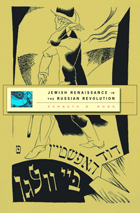
Between 1917 and 1921, as revolution convulsed Russia, Jewish intellectuals and writers across the crumbling empire threw themselves into the pursuit of a “Jewish renaissance.” At the heart of their program lay a radically new vision of Jewish culture predicated not on religion but on art and secular individuality, national in scope yet cosmopolitan in content, framed by a fierce devotion to Hebrew or Yiddish yet obsessed with importing and participating in the shared culture of Europe and the world. These cultural warriors sought to recast themselves and other Jews not only as a modern nation but as a nation of moderns.
Kenneth Moss offers the first comprehensive look at this fascinating moment in Jewish and Russian history. He examines what these numerous would-be cultural revolutionaries, such as El Lissitzky and Haim Nahman Bialik, meant by a new Jewish culture, and details their fierce disagreements but also their shared assumptions about what culture was and why it was so important. In close readings of Hebrew, Yiddish, and Russian texts, he traces how they sought to realize their ideals in practice as writers, artists, and thinkers in the burgeoning cultural centers of Moscow, Kiev, and Odessa. And he reveals what happened to them and their ideals as the Bolsheviks consolidated their hold over cultural life.
Here is a brilliant, revisionist argument about the nature of cultural nationalism, the relationship between nationalism and socialism as ideological systems, and culture itself, the axis around which the encounter between Jews and European modernity has pivoted over the past century.
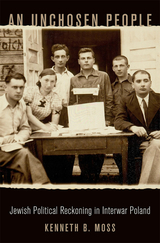
A revisionist account of interwar Europe’s largest Jewish community that upends histories of Jewish agency to rediscover reckonings with nationalism’s pathologies, diaspora’s fragility, Zionism’s promises, and the necessity of choice.
What did the future hold for interwar Europe’s largest Jewish community, the font of global Jewish hopes? When intrepid analysts asked these questions on the cusp of the 1930s, they discovered a Polish Jewry reckoning with “no tomorrow.” Assailed by antisemitism and witnessing liberalism’s collapse, some Polish Jews looked past progressive hopes or religious certainties to investigate what the nation-state was becoming, what powers minority communities really possessed, and where a future might be found—and for whom.
The story of modern Jewry is often told as one of creativity and contestation. Kenneth B. Moss traces instead a late Jewish reckoning with diasporic vulnerability, nationalism’s terrible potencies, Zionism’s promises, and the necessity of choice. Moss examines the works of Polish Jewry’s most searching thinkers as they confronted political irrationality, state crisis, and the limits of resistance. He reconstructs the desperate creativity of activists seeking to counter despair where they could not redress its causes. And he recovers a lost grassroots history of critical thought and political searching among ordinary Jews, young and powerless, as they struggled to find a viable future for themselves—in Palestine if not in Poland, individually if not communally.
Focusing not on ideals but on a search for realism, Moss recasts the history of modern Jewish political thought. Where much scholarship seeks Jewish agency over a collective future, An Unchosen People recovers a darker tradition characterized by painful tradeoffs amid a harrowing political reality, making Polish Jewry a paradigmatic example of the minority experience endemic to the nation-state.
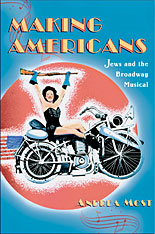
From 1925 to 1951--three chaotic decades of depression, war, and social upheaval--Jewish writers brought to the musical stage a powerfully appealing vision of America fashioned through song and dance. It was an optimistic, meritocratic, selectively inclusive America in which Jews could at once lose and find themselves--assimilation enacted onstage and off, as Andrea Most shows. This book examines two interwoven narratives crucial to an understanding of twentieth-century American culture: the stories of Jewish acculturation and of the development of the American musical.
Here we delve into the work of the most influential artists of the genre during the years surrounding World War II--Irving Berlin, Eddie Cantor, Dorothy and Herbert Fields, George and Ira Gershwin, Oscar Hammerstein, Lorenz Hart, and Richard Rodgers--and encounter new interpretations of classics such as The Jazz Singer, Whoopee, Girl Crazy, Babes in Arms, Oklahoma!, Annie Get Your Gun, South Pacific, and The King and I. Most's analysis reveals how these brilliant composers, librettists, and performers transformed the experience of New York Jews into the grand, even sacred acts of being American. Read in the context of memoirs, correspondence, production designs, photographs, and newspaper clippings, the Broadway musical clearly emerges as a form by which Jewish artists negotiated their entrance into secular American society. In this book we see how the communities these musicals invented and the anthems they popularized constructed a vision of America that fostered self-understanding as the nation became a global power.
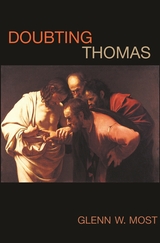
About the disciple known as Doubting Thomas, everyone knows at least this much: he stuck his finger into the risen Jesus’ wounds. Or did he? A fresh look at the Gospel of John reveals how little we may really understand about this most perplexing of biblical figures, and how much we might learn from the strange twists and turns Thomas’s story has taken over time.
From the New Testament, Glenn W. Most traces Thomas’s permutations through the centuries: as Gnostic saint, missionary to India, paragon of Christian orthodoxy, hero of skepticism, and negative example of doubt, blasphemy, stupidity, and violence. Rife with paradoxes and tensions, these creative transformations at the hands of storytellers, theologians, and artists tell us a great deal about the complex relations between texts and their interpretations—and about faith, love, personal identity, the body, and twins, among other matters.
Doubting Thomas begins with a close reading of chapter 20 of the Gospel of John, set against the conclusions of the other Gospels, and ends with a detailed analysis of the painting of this subject by Caravaggio, setting it within the pictorial traditions of late antiquity, the Middle Ages, and the Renaissance. Along the way, Most considers narrative reactions to John’s account by storytellers of various religious persuasions, and Christian theologians’ interpretations of John 20 from the second century ad until the Counter-Reformation. His work shows how Thomas’s story, in its many guises, touches upon central questions of religion, philosophy, hermeneutics, and, not least, life.



States are inherently and fundamentally geographical. Sovereignty is based on control of territory. This book uses Song China to explain how a pre-industrial regime organized itself spatially in order to exercise authority. On more than a thousand occasions, the Song court founded, abolished, promoted, demoted, and reordered jurisdictions in an attempt to maximize the effectiveness of limited resources in a climate of shifting priorities, to placate competing constituencies, and to address military and economic crises. Spatial transformations in the Song field administration changed the geography of commerce, taxation, revenue accumulation, warfare, foreign relations, and social organization, and even determined the terms of debates about imperial power.
The chronology of tenth-century imperial consolidation, eleventh-century political reform, and twelfth-century localism traced in this book is a familiar one. But by detailing the relationship between the court and local administration, this book complicates the received paradigm of Song centralization and decentralization. Song frontier policies formed a coherent imperial approach to administering peripheral regions with inaccessible resources and limited infrastructure. And the well-known events of the Song—wars and reforms—were often responses to long-term spatial and demographic change.

Winner of the Ernst Fraenkel Prize, Wiener Holocaust Library
An Open Letters Monthly Best History Book of the Year
A New York Post “Must-Read”
In the most crucial phase of the Second World War, German troops confronted the Allies across lands largely populated by Muslims. Nazi officials saw Islam as a powerful force with the same enemies as Germany: the British Empire, the Soviet Union, and the Jews. Islam and Nazi Germany’s War is the first comprehensive account of Berlin’s remarkably ambitious attempts to build an alliance with the Islamic world.
“Motadel describes the Mufti’s Nazi dealings vividly…Impeccably researched and clearly written, [his] book will transform our understanding of the Nazi policies that were, Motadel writes, some ‘of the most vigorous attempts to politicize and instrumentalize Islam in modern history.’”
—Dominic Green, Wall Street Journal
“Motadel’s treatment of an unsavory segment of modern Muslim history is as revealing as it is nuanced. Its strength lies not just in its erudite account of the Nazi perception of Islam but also in illustrating how the Allies used exactly the same tactics to rally Muslims against Hitler. With the specter of Isis haunting the world, it contains lessons from history we all need to learn.”
—Ziauddin Sardar, The Independent
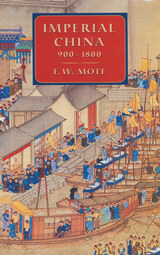
This is a history of China for the 900-year time span of the late imperial period. A senior scholar of this epoch, F. W. Mote highlights the personal characteristics of the rulers and dynasties and probes the cultural theme of Chinese adaptations to recurrent alien rule. No other work provides a similar synthesis: generational events, personalities, and the spirit of the age combine to yield a comprehensive history of the civilization, not isolated but shaped by its relation to outsiders.
This vast panorama of the civilization of the largest society in human history reveals much about Chinese high and low culture, and the influential role of Confucian philosophical and social ideals. Throughout the Liao Empire, the world of the Song, the Mongol rule, and the early Qing through the Kangxi and Qianlong reigns, culture, ideas, and personalities are richly woven into the fabric of the political order and institutions. This is a monumental work that will stand among the classic accounts of the nature and vibrancy of Chinese civilization before the modern period.
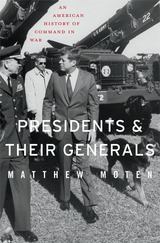
Since World War II, the United States has been engaged in near-constant military conflict abroad, often with ill-defined objectives, ineffectual strategy, and uncertain benefits. In this era of limited congressional oversight and “wars of choice,” the executive and the armed services have shared the primary responsibility for making war. The negotiations between presidents and their generals thus grow ever more significant, and understanding them becomes essential.
Matthew Moten traces a sweeping history of the evolving roles of civilian and military leaders in conducting war, demonstrating how war strategy and national security policy shifted as political and military institutions developed, and how they were shaped by leaders’ personalities. Early presidents established the principle of military subordination to civil government, and from the Civil War to World War II the president’s role as commander-in-chief solidified, with an increasingly professionalized military offering its counsel. But General Douglas MacArthur’s insubordination to President Harry Truman during the Korean War put political-military tensions on public view. Subsequent presidents selected generals who would ally themselves with administration priorities. Military commanders in Vietnam, Iraq, and Afghanistan did just that—and the results were poorly conceived policy and badly executed strategy.
The most effective historical collaborations between presidents and their generals were built on mutual respect for military expertise and civilian authority, and a willingness to negotiate with candor and competence. Upon these foundations, future soldiers and statesmen can ensure effective decision-making in the event of war and bring us closer to the possibility of peace.

The Dada Painters and Poets offers the authentic answer to the question “What is Dada?” This incomparable collection of essays, manifestos, and illustrations was prepared by Robert Motherwell with the collaboration of some of the major Dada figures: Marcel Duchamp, Jean Arp, and Max Ernst among others. Here in their own words and art, the principals of the movement create a composite picture of Dada—its convictions, antics, and spirit.
First published in 1951, this treasure trove remains, as Jack D. Flam states in his foreword to the second edition, “the most comprehensive and important anthology of Dada writings in any language, and a fascinating and very readable book.” It contains every major text on the Dada movement, including retrospective studies, personal memoirs, and prime examples. The illustrations range from photos of participants, in characteristic Dadaist attitudes, to facsimiles of their productions.

In 1939 Frank Luther Mott received a Pulitzer Prize for Volumes II and III of his History of American Magazines. In 1958 he was awarded the Bancroft Prize for Volume IV. He was at work on Volume V of the projected six-volume history when he died in October 1964. He had, at that time, written the sketches of the twenty-one magazines that appear in this volume. These magazines flourished during the period 1905–1930, but their “biographies” are continued throughout their entire lifespan—in the case of the ten still published, to recent years. Mott’s daughter, Mildred Mott Wedel, has prepared this volume for publication and provided notes on changes since her father’s death. No one has attempted to write the general historical chapters the author provided in the earlier volumes but which were not yet written for this last volume. A delightful autobiographical essay by the author has been included, and there is a detailed cumulative index to the entire set of this monumental work.
The period 1905–1930 witnessed the most flamboyant and fruitful literary activity that had yet occurred in America. In his sketches, Mott traces the editorial partnership of H. L. Mencken and George Jean Nathan, first on The Smart Set and then in the pages of The American Mercury. He treats The New Republic, the liberal magazine founded in 1914 by Herbert Croly and Willard Straight; the conservative Freeman; and Better Homes and Gardens, the first magazine to achieve a circulation of one million “without the aid of fiction or fashions.” Other giants of magazine history are here: we see “serious, shaggy…solid, pragmatic, self-contained” Henry Luce propel a national magazine called Time toward its remarkable prosperity. In addition to those already mentioned, the reader will find accounts of The Midland, The South Atlantic Quarterly, The Little Review, Poetry, The Fugitive, Everybody’s, Appleton’s Booklovers Magazine, Current History, Editor & Publisher, The Golden Book Magazine, Good Housekeeping, Hampton’s Broadway Magazine, House Beautiful, Success, and The Yale Review.

In the fourth volume of his widely acclaimed History of American Magazines (volumes two and three of which received the Pulitzer Prize), Frank Mott carries his story into the first years of our century. By means of analysis and of lively quotation from the magazines themselves, the author shows the changes in the social, political, and economic life of the times in America, the movements in ideas and taste, and the developments of popular interests.
This is the period when the Saturday Evening Post, the Ladies Home Journal, Collier’s, Cosmopolitan, and National Geographic came into prominence, and their development—in terms of management, policies, personalities—is treated in full by Mott. More than thirty other magazines are surveyed in separate chapters, and hundreds of others are given shorter treatment. The first few chapters are devoted to a consideration of the outstanding elements in the over-all development of American magazines, such as advertising and illustrations. One of the most important aspects of this two-decade period was the advent of the highly successful ten-cent illustrated monthly in the middle nineties. This interfered with the calm and stately progress of such older thirty-five cent magazines as The Century, Harper’s, and The Atlantic.
Ensuing chapters deal with magazines in the special fields, and in each case the periodicals themselves are integrated with the background movements. Thus, in addition to magazines mentioned above, Mott is concerned with periodicals about literature, the graphic arts, foreign interests, drama, music, education, religion, philosophy, science, medicine, engineering, construction, transportation, agriculture, law, banking, advertising, women’s activities, sports, humor, and hobbies.




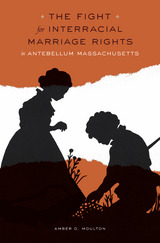
Well known as an abolitionist stronghold before the Civil War, Massachusetts had taken steps to eliminate slavery as early as the 1780s. Nevertheless, a powerful racial caste system still held sway, reinforced by a law prohibiting “amalgamation”—marriage between whites and blacks. The Fight for Interracial Marriage Rights in Antebellum Massachusetts chronicles a grassroots movement to overturn the state’s ban on interracial unions. Assembling information from court and church records, family histories, and popular literature, Amber D. Moulton recreates an unlikely collaboration of reformers who sought to rectify what, in the eyes of the state’s antislavery constituency, appeared to be an indefensible injustice.
Initially, activists argued that the ban provided a legal foundation for white supremacy in Massachusetts. But laws that enforced racial hierarchy remained popular even in Northern states, and the movement gained little traction. To attract broader support, the reformers recalibrated their arguments along moral lines, insisting that the prohibition on interracial unions weakened the basis of all marriage, by encouraging promiscuity, prostitution, and illegitimacy. Through trial and error, reform leaders shaped an appeal that ultimately drew in Garrisonian abolitionists, equal rights activists, antislavery evangelicals, moral reformers, and Yankee legislators, all working to legalize interracial marriage.
This pre–Civil War effort to overturn Massachusetts’ antimiscegenation law was not a political aberration but a crucial chapter in the deep history of the African American struggle for equal rights, on a continuum with the civil rights movement over a century later.
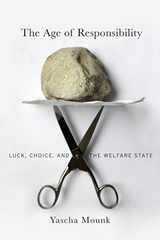
A New York Times Book Review Editors’ Choice
Responsibility—which once meant the moral duty to help and support others—has come to be equated with an obligation to be self-sufficient. This has guided recent reforms of the welfare state, making key entitlements conditional on good behavior. Drawing on political theory and moral philosophy, Yascha Mounk shows why this re-imagining of personal responsibility is pernicious—and suggests how it might be overcome.
“This important book prompts us to reconsider the role of luck and choice in debates about welfare, and to rethink our mutual responsibilities as citizens.”
—Michael J. Sandel, author of Justice
“A smart and engaging book… Do we so value holding people accountable that we are willing to jeopardize our own welfare for a proper comeuppance?”
—New York Times Book Review
“An important new book… [Mounk] mounts a compelling case that political rhetoric…has shifted over the last half century toward a markedly punitive vision of social welfare.”
—Los Angeles Review of Books
“A terrific book. The insight at its heart—that the conception of responsibility now at work in much public rhetoric and policy is both punitive and ill-conceived—is very important and should be widely heeded.”
—Jedediah Purdy, author of After Nature: A Politics for the Anthropocene

A New York Times Book Review Editors’ Choice
“Everyone worried about the state of contemporary politics should read this book.”
—Anne-Marie Slaughter
“A trenchant survey from 1989, with its democratic euphoria, to the current map of autocratic striving.”
—David Remnick, New Yorker
The world is in turmoil. From Russia and Turkey across Europe to the United States, authoritarian populists have seized power as two core components of liberal democracy—individual rights and the popular will—are increasingly at war. As the role of money in politics has soared, a system of “rights without democracy” has taken hold. Populists who rail against this say they want to return power to the people. But in practice they create something just as bad: a system of “democracy without rights.” Yascha Mounk offers a clear and trenchant analysis of what ails our democracy and what it will take to get it back on track.
“Democracy is going through its worst crisis since the 1930s… But what exactly is the nature of this crisis? And what is driving it? The People vs. Democracy stands out in a crowded field for the quality of its answers to these questions.”
—The Economist
“Brilliant… As this superb book makes clear, we need both the liberal framework and the democracy, and bringing them back together is the greatest challenge of our time.”
—Los Angeles Times
“Extraordinary…provides a clear, concise, persuasive, and insightful account of the conditions that made liberal democracy work—and how the breakdown in those conditions is the source of the current crisis of democracy around the world.”
—The Guardian

The cerebral cortex, occupying over 70 percent of our brain mass, is key to any understanding of the workings--and disorders--of the human brain. offering a comprehensive account of the role of the cerebral cortex in perception, this monumental work by one of the world's greatest living neuroscientists does nothing short of creating a new subdiscipline in the field: perceptual neuroscience.
For this undertaking, Vernon Mountcastle has gathered information from a vast number of sources reaching back through two centuries of investigation into the intrinsic operations of the cortex. His survey includes phylogenetic, comparative, and neuroanatomical studies of the neocortex; studies of the large-scale organization of the neocortex, of neuronal histogenesis and the specification of cortical areas, of synaptic transmission between neurons in cortical microcircuits, and of rhythmicity and synchronization in neocortical networks; and inquiries into the binding problem--how activities among the separate processing nodes of distributed systems coalesce in a coherent activity that we call perception.
The first book to summarize what is known about the physiology of the cortex in perception, Perceptual Neuroscience will be a landmark in the literature of neuroscience.
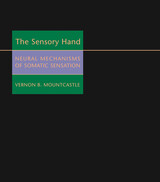
The hand is an organ of considerable capability. With it we feel, point, and reach, we determine the texture and shape of objects we palpate, we emit and receive signs of approval, compassion, condolence, and encouragement, and, on a different register, rejection, threat, dislike, antagonism, and attack.
Vernon Mountcastle has devoted his career to studying the neurophysiology of sensation--the extended sensory surface, consisting of skin and subcutaneous tissue--in the hand. In The Sensory Hand Mountcastle provides an astonishingly comprehensive account of the neural underpinnings of the rich and complex tactile experiences evoked by stimulation of the hand. Mountcastle focuses attention on the nerve pathways linking the hand to central neural structures, structures that play a role in several other aspects of somatic sensation. His new book thus becomes a sequel to his earlier volume, Perceptual Neuroscience, in which he offered a detailed analysis of the role of the distributed systems of the neocortex in perception generally.
Written by one of the giants of modern neuroscience and the first single-authored book-length treatment of the subject, The Sensory Hand is a major work of scholarship that will be essential reading for anyone interested in how the brain registers sensation and perception.

In this vigorous and well-documented "current view" of competition in the mid-western coal industry, Reed Moyer has set himself two tasks: to bring up to date existing economic analyses and to correct a "distortion which arises from generalizing about an industry composed of several diverse parts."
Most previous economic analyses have become obsolete, partly because of the shifting picture within the industry. Moyer’s detailed study of the economic behavior of the midwestern coal industry focuses on the transformation in the mining operation. Contrary to popular opinion, the bituminous coal industry in the Midwest is not "chronically depressed"; instead, it is successfully surmounting years of stagnation dating back to the 1920s, the effects of strikes, and the stiff competition offered coal by other fuels in the recent past. Concerned primarily with the coal producing regions of Illinois, Indiana, and western Kentucky, the author considers not only the economic factors touching the industry, but the geologic and geographic as well. In a framework of market structure, conduct, and performance Moyer analyzes in detail the "geographically isolated position of the midwestern coal industry," which "limits interdistrict competition."
Ample discussion is devoted to factors which influence the structural characteristics and the economic behavior of the industry: seller concentration, the importance of freight rates in determining delivery costs, price competition, entry barriers, and the effect of mining techniques on resource conservation, to name a few. The book includes an extensive treatment of the mining methods, strip and underground, common to the region, and their influence on its economic picture. This crisply written technical study searches thoroughly into the many facets of a leading component of a still lively major industry. The author has drawn on a supply of unpublished material as well as on information from confidential sources.
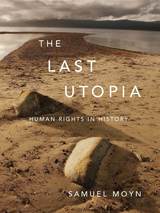
Human rights offer a vision of international justice that today’s idealistic millions hold dear. Yet the very concept on which the movement is based became familiar only a few decades ago when it profoundly reshaped our hopes for an improved humanity. In this pioneering book, Samuel Moyn elevates that extraordinary transformation to center stage and asks what it reveals about the ideal’s troubled present and uncertain future.
For some, human rights stretch back to the dawn of Western civilization, the age of the American and French Revolutions, or the post–World War II moment when the Universal Declaration of Human Rights was framed. Revisiting these episodes in a dramatic tour of humanity’s moral history, The Last Utopia shows that it was in the decade after 1968 that human rights began to make sense to broad communities of people as the proper cause of justice. Across eastern and western Europe, as well as throughout the United States and Latin America, human rights crystallized in a few short years as social activism and political rhetoric moved it from the hallways of the United Nations to the global forefront.
It was on the ruins of earlier political utopias, Moyn argues, that human rights achieved contemporary prominence. The morality of individual rights substituted for the soiled political dreams of revolutionary communism and nationalism as international law became an alternative to popular struggle and bloody violence. But as the ideal of human rights enters into rival political agendas, it requires more vigilance and scrutiny than when it became the watchword of our hopes.
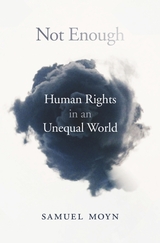
“No one has written with more penetrating skepticism about the history of human rights.”
—Adam Kirsch, Wall Street Journal
“Moyn breaks new ground in examining the relationship between human rights and economic fairness.”
—George Soros
The age of human rights has been kindest to the rich. While state violations of political rights have garnered unprecedented attention in recent decades, a commitment to material equality has quietly disappeared. In its place, economic liberalization has emerged as the dominant force. In this provocative book, Samuel Moyn considers how and why we chose to make human rights our highest ideals while simultaneously neglecting the demands of broader social and economic justice.
Moyn places the human rights movement in relation to this disturbing shift and explores why the rise of human rights has occurred alongside exploding inequality.
“Moyn asks whether human-rights theorists and advocates, in the quest to make the world better for all, have actually helped to make things worse… Sure to provoke a wider discussion.”
—Adam Kirsch, Wall Street Journal
“A sharpening interrogation of the liberal order and the institutions of global governance created by, and arguably for, Pax Americana… Consistently bracing.”
—Pankaj Mishra, London Review of Books
“Moyn suggests that our current vocabularies of global justice—above all our belief in the emancipatory potential of human rights—need to be discarded if we are work to make our vastly unequal world more equal… [A] tour de force.”
—Los Angeles Review of Books

Has liberalism lost its way--or merely its voice? This book by one of the nation's most insightful, articulate, and powerful Democrats at last breaks the silence that has greeted the Republican Party's revolution of 1994. When voters handed Democrats their worst defeat in 100 years, New Yorkers returned Daniel Patrick Moynihan to the Senate for his fourth term. Amid the wreck of his party's control and the disarray of programs and policies he has championed for three decades, Senator Moynihan here takes stock of the politics, economics, and social problems that have brought us to this pass. With a clarity and civility far too rare in the political arena, he offers a wide-ranging meditation on the nation's social strategies for the last 60 years, as well as a vision for the years to come.
Because Senator Moynihan has long been a defender of the policies whose fortunes he follows here, Miles to Go is in a sense autobiographical, an exemplary account of the social life of the body politic. As it guides us through government's attempts to grapple with thorny problems like family disintegration, welfare, health care, deviance, and addiction, Moynihan writes of "The Coming of Age of American Social Policy." Through most of our history American social policy has dealt with issues that first arose in Europe, and essentially followed European models. Now, in a post-industrial society we face issues that first appear in the United States for which we will have to devise our own responses. Ringing with the wisdom of experience, decency, and common sense, Miles to Go asks "why liberalism cannot be taught what conservatives seem to know instinctively"--to heed the political and moral sentiments of the people and reshape itself for the coming age.

Foreign Policy. “In the annals of forgetfulness there is nothing quite to compare with the fading from the American mind of the idea of the law of nations.”
Grenada. “We might have benefited from a weekend’s pause in which we could have considered our interests rather than merely giving in to our impulses.”
The mining of Nicaraguan harbors. “A practice of deception mutated into a policy of deceit.”
Iran–Contra. “The idea of international law had faded. But just as important, in the 1980s it had come to be associated with weaknesses in foreign policy. Real men did not cite Grotius.”
As the era of totalitarianism recedes, the time is at hand to ask by what rules we expect to conduct ourselves, Senator Daniel Patrick Moynihan writes in this pellucid, and often ironic, examination of international law. Our founding fathers had a firm grasp on the importance and centrality of such law; later presidents affirmed it and tried to establish international institutions based on such high principles; but we lost our way in the fog of the Cold War.
Moynihan’s exploration of American attitudes toward international law—those of presidents, senators, congressmen, public officials, and the public at large—reveals the abiding reverence for a law of nations and the attempts for almost two hundred years to make international law the centerpiece of foreign and strategic policy. Only in the last decade did a shift in values at the highest levels of government change the goals and conduct of the United States.
Displaying a firm grasp of history, informed by senatorial insights and investigative data, elegantly written, this book is a triumph of scholarship, interpretation, and insight.
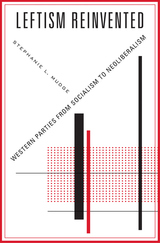
Left-leaning political parties play an important role as representatives of the poor and disempowered. They once did so by promising protections from the forces of capital and the market’s tendencies to produce inequality. But in the 1990s they gave up on protection, asking voters to adapt to a market-driven world. Meanwhile, new, extreme parties began to promise economic protections of their own—albeit in an angry, anti-immigrant tone.
To better understand today’s strange new political world, Stephanie L. Mudge’s Leftism Reinvented analyzes the history of the Swedish and German Social Democrats, the British Labour Party, and the American Democratic Party. Breaking with an assumption that parties simply respond to forces beyond their control, Mudge argues that left parties’ changing promises expressed the worldviews of different kinds of experts. To understand how left parties speak, we have to understand the people who speak for them.
Leftism Reinvented shows how Keynesian economists came to speak for left parties by the early 1960s. These economists saw their task in terms of discretionary, politically-sensitive economic management. But in the 1980s a new kind of economist, who viewed the advancement of markets as left parties’ main task, came to the fore. Meanwhile, as voters’ loyalties to left parties waned, professional strategists were called upon to “spin” party messages. Ultimately, left parties undermined themselves, leaving a representative vacuum in their wake. Leftism Reinvented raises new questions about the roles and responsibilities of left parties—and their experts—in politics today.


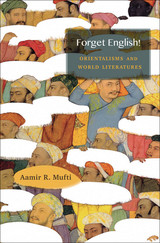
A Choice Outstanding Academic Title of the Year
The idea of world literature has garnered much attention recently as a discipline that promises to move humanistic study beyond postcolonial theory and antiquated paradigms of “national” literary traditions. In Forget English! Aamir Mufti scrutinizes the claims made on behalf of world literature by its advocates. The notion of a borderless, egalitarian global literature has obvious appeal, he notes, but behind it lurks the continuing dominance of English as a literary language and a cultural system of international reach.
“Mufti’s historical perspective and insightful analyses of India’s anglophone novel generate constant echoes with the realities of anglophone writings in other cultures.”
—Eva Shan Chou, Times Higher Education
“Mufti’s book is in one sense a quarrel with Salman Rushdie’s overly enthusiastic celebration of English-language ‘postcolonial’ South Asian literature, but more important, the book extends, qualifies, and enriches Edward Said’s work on Orientalism, demonstrating that despite its promise, world literature does not eliminate the dominant role of the Anglophone book market in shaping South Asian literature…Mufti’s book is both accessible and theoretically informed.”
—K. Tölölyan, Choice
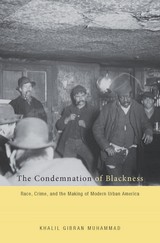
Winner of the John Hope Franklin Prize
A Moyers & Company Best Book of the Year
“[A] brilliant work that tells us how directly the past has formed us.”
—Darryl Pinckney, New York Review of Books
Lynch mobs, chain gangs, and popular views of black southern criminals that defined the Jim Crow South are well known. We know less about the role of the urban North in shaping views of race and crime in American society.
Following the 1890 census, the first to measure the generation of African Americans born after slavery, crime statistics, new migration and immigration trends, and symbolic references to America as the promised land of opportunity were woven into a cautionary tale about the exceptional threat black people posed to modern urban society. Excessive arrest rates and overrepresentation in northern prisons were seen by many whites—liberals and conservatives, northerners and southerners—as indisputable proof of blacks’ inferiority. In the heyday of “separate but equal,” what else but pathology could explain black failure in the “land of opportunity”?
The idea of black criminality was crucial to the making of modern urban America, as were African Americans’ own ideas about race and crime. Chronicling the emergence of deeply embedded notions of black people as a dangerous race of criminals by explicit contrast to working-class whites and European immigrants, Khalil Gibran Muhammad reveals the influence such ideas have had on urban development and social policies.
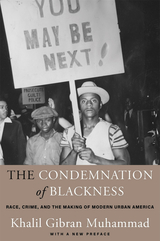
Winner of the John Hope Franklin Prize
A Moyers & Company Best Book of the Year
“A brilliant work that tells us how directly the past has formed us.”
—Darryl Pinckney, New York Review of Books
How did we come to think of race as synonymous with crime? A brilliant and deeply disturbing biography of the idea of black criminality in the making of modern urban America, The Condemnation of Blackness reveals the influence this pernicious myth, rooted in crime statistics, has had on our society and our sense of self. Black crime statistics have shaped debates about everything from public education to policing to presidential elections, fueling racism and justifying inequality. How was this statistical link between blackness and criminality initially forged? Why was the same link not made for whites? In the age of Black Lives Matter and Donald Trump, under the shadow of Ferguson and Baltimore, no questions could be more urgent.
“The role of social-science research in creating the myth of black criminality is the focus of this seminal work…[It] shows how progressive reformers, academics, and policy-makers subscribed to a ‘statistical discourse’ about black crime…one that shifted blame onto black people for their disproportionate incarceration and continues to sustain gross racial disparities in American law enforcement and criminal justice.”
—Elizabeth Hinton, The Nation
“Muhammad identifies two different responses to crime among African-Americans in the post–Civil War years, both of which are still with us: in the South, there was vigilantism; in the North, there was an increased police presence. This was not the case when it came to white European-immigrant groups that were also being demonized for supposedly containing large criminal elements.”
—New Yorker

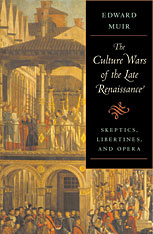
In the summer of 1591 students from the University of Padua attacked the local Jesuit college and successfully appealed to the Venetian Senate to intervene on behalf of the university. When the Jesuits were expelled from the Venetian dominion a few years later, religious censorship was virtually eliminated. The result was a remarkable era of cultural innovation that promoted free inquiry in the face of philosophical and theological orthodoxy, advocated libertine morals, critiqued the tyranny of aristocratic fathers over their daughters, and expanded the theatrical potential of grand opera.
In Padua a faction of university faculty, including Galileo Galilei and the philosopher Cesare Cremonini, pursued an open and free inquiry into astronomy and philosophy. In Venice some of Cremonini's students founded the Accademia degli Incogniti (Academy of the Unknowns), one of whose most notorious members was the brilliant polemicist Ferrante Pallavicino.
The execution of Pallavicino for his writings attacking Pope Urban VIII silenced the more outrageous members of the Incogniti, who soon turned to writing libretti for operas. The final phase of the Venetian culture wars pitted commercial opera, with its female performers and racy plot lines, against the decorous model of Jesuit theater. The libertine inclinations of the Incogniti suffuse many of the operas written in the 1640s, especially Monteverdi's masterpiece, L'Incoronazione di Poppea.
Edward Muir's exploration of an earlier age of anxiety reveals the distinguished past of today's culture wars, including debates about the place of women in society, the clash between science and faith, and the power of the arts to stir emotions.

This elegant essay on the justice of work focuses on the fit between who we are and the kind of work we do. Russell Muirhead shows how the common hope for work that fulfills us involves more than personal interest; it also points to larger understandings of a just society. We are defined in part by the jobs we hold, and Muirhead has something important to say about the partial satisfactions of the working life, and the increasingly urgent need to balance the claims of work against those of family and community.
Against the tendency to think of work exclusively in contractual terms, Muirhead focuses on the importance of work to our sense of a life well lived. Our notions of freedom and fairness are incomplete, he argues, without due consideration of how we fit the work we do.
Muirhead weaves his argument out of sociological, economic, and philosophical analysis. He shows, among other things, how modern feminism's effort to reform domestic work and extend the promise of careers has contributed to more democratic understandings of what it means to have work that fits. His account of individual and social fit as twin standards of assessment is original and convincing--it points both to the unavoidable problem of distributing bad work in society and to the personal importance of finding fulfilling work. These themes are pursued through a wide-ranging discussion that engages thinkers from Plato to John Stuart Mill to Betty Friedan. Just Work shows what it would mean for work to make good on the high promise so often invested in it and suggests what we--both as a society and as individuals--might do when it falls short.
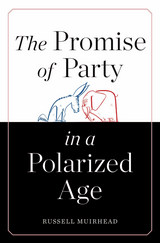
At the root of America’s broken politics is hyperbolic partisanship. It distorts perceptions, inflames disagreements, and poisons the democratic process. Citizens pine for a time when liberals and conservatives compromised with one another—or they yearn for a post-partisan future when the common good trumps ideology and self-interest. Russell Muirhead argues that better partisanship, not less partisanship, is the solution to America’s political predicament. Instead of striving to overcome our differences, we should learn how to engage them.
The political conflicts that provide fodder for cable news shows are not simply manufactured from thin air. However sensationalized they become in the retelling, they originate in authentic disagreements over what constitutes the common welfare. Republicans vest responsibility in each citizen for dealing with bad decisions and bad luck, and want every individual and family to enjoy the benefits of good decisions and good luck. Democrats ask citizens to stand together to insure one another against the worst consequences of misfortune or poor judgment, and especially to insure children against some of the consequences of their parents’ bad decisions or lack of opportunities. These are fundamental differences that fantasies of bipartisan consensus cannot dissolve.
Disagreement without parties is disempowering, Muirhead says. The remedy is not for citizens and elected officials to learn to “just get along” but for them to bring a skeptical sensibility even to their own convictions, and to learn to disagree as partisans and govern through compromise despite those disagreements.
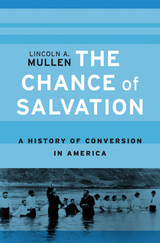
The United States has a long history of religious pluralism, and yet Americans have often thought that people’s faith determines their eternal destinies. The result is that Americans switch religions more often than any other nation. The Chance of Salvation traces the history of the distinctively American idea that religion is a matter of individual choice.
Lincoln Mullen shows how the willingness of Americans to change faiths, recorded in narratives that describe a wide variety of conversion experiences, created a shared assumption that religious identity is a decision. In the nineteenth century, as Americans confronted a growing array of religious options, pressures to convert altered the basis of American religion. Evangelical Protestants emphasized conversion as a personal choice, while Protestant missionaries brought Christianity to Native American nations such as the Cherokee, who adopted Christianity on their own terms. Enslaved and freed African Americans similarly created a distinctive form of Christian conversion based on ideas of divine justice and redemption. Mormons proselytized for a new tradition that stressed individual free will. American Jews largely resisted evangelism while at the same time winning converts to Judaism. Converts to Catholicism chose to opt out of the system of religious choice by turning to the authority of the Church.
By the early twentieth century, religion in the United States was a system of competing options that created an obligation for more and more Americans to choose their own faith. Religion had changed from a family inheritance to a consciously adopted identity.

Conflict between males and females over reproduction is ubiquitous in nature due to fundamental differences between the sexes in reproductive rates and investment in offspring. In only a few species, however, do males strategically employ violence to control female sexuality. Why are so many of these primates? Why are females routinely abused in some species, but never in others? And can the study of such unpleasant behavior by our closest relatives help us to understand the evolution of men’s violence against women?
In the first systematic attempt to assess and understand primate male aggression as an expression of sexual conflict, the contributors to this volume consider coercion in direct and indirect forms: direct, in overcoming female resistance to mating; indirect, in decreasing the chance the female will mate with other males. The book presents extensive field research and analysis to evaluate the form of sexual coercion in a range of species—including all of the great apes and humans—and to clarify its role in shaping social relationships among males, among females, and between the sexes.
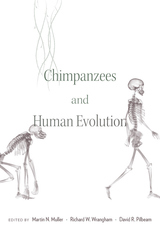
Knowledge of chimpanzees in the wild has expanded dramatically in recent years. This comprehensive volume, edited by Martin Muller, Richard Wrangham, and David Pilbeam, brings together scientists who are leading a revolution to discover and explain what is unique about humans, by studying their closest living relatives. Their observations and conclusions have the potential to transform our understanding of human evolution.
Chimpanzees offer scientists an unmatched view of what distinguishes humanity from its apelike ancestors. Based on evidence from the hominin fossil record and extensive morphological, developmental, and genetic data, Chimpanzees and Human Evolution makes the case that the last common ancestor of chimpanzees and humans was chimpanzee-like. It most likely lived in African rainforests around eight million years ago, eating fruit and walking on its knuckles. Readers will learn why chimpanzees are a better model for the last common ancestor than bonobos, gorillas, or orangutans. A thorough chapter-by-chapter analysis reveals which key traits we share with chimpanzees and which appear to be distinctive to Homo sapiens, and shows how understanding chimpanzees helps us account for the evolution of human uniqueness. Traits surveyed include social behaviors and structures, mating systems, diet, hunting practices, tool use, culture, cognition, and communication.
Edited by three of primatology’s most renowned experts, with contributions from 32 scholars drawing on decades of field research, Chimpanzees and Human Evolution provides readers with detailed up-to-date information on what we can infer about our chimpanzee-like ancestors and points the way forward for the next generation of discoveries.

Founded in 1941, the annual journal Dumbarton Oaks Papers is dedicated to the publication of articles relating to late antique, early medieval, and Byzantine civilization in the fields of art and architecture, history, archaeology, literature, theology, law, and auxiliary disciplines.
This issue includes “The Canon Tables of the Psalms: An Unknown Work of Eusebius of Caesarea” by Martin Wallraff; “Histoires ‘Gothiques’ à Byzance: Le Saint, Le Soldat, et Le Miracle d’Euphémie et du Goth (BHG 739)” by Charis Messis and Stratis Papaioannou; “Reassessing the Sarcophagi of Ravenna” by Edward M. Schoolman; “Sources for the Study of Liturgy in Post-Byzantine Jerusalem (638–1187 CE)” by Daniel Galadza; “(Re)Mapping Medieval Antioch: Urban Transformations from the Early Islamic to the Middle Byzantine Periods” by A. Asa Eger; “Melkites and Icon Worship during the Iconoclastic Period” by Juan Signes Codoñer; “The Anzas Family: Members of the Byzantine Civil Establishment in the Eleventh, Twelfth, and Thirteenth Centuries” by John Nesbitt and Werner Seibt; “Viewing and Description in Hysmine and Hysminias: The Fresco of the Virtues” by Paroma Chatterjee; “The Documents of Dominicus Grimani, Notary in Candia (1356–1357)” by Nicky Tsougarakis; and “The Church of Saints Sergius and Bacchus in Kaftūn (Northern Lebanon) and Its Wall Paintings” by Tomasz Waliszewski, Krzysztof Chmielewski, Mat Immerzeel, and Nada Hélou.





Founded by Constantine the Great, rebuilt by Justinian, and redecorated in the ninth, tenth, and twelfth centuries, the Church of the Holy Apostles in Constantinople was the mausoleum of emperors, patriarchs, and saints. It was also a key station in the ceremonies of the city, the site of an important school, a major inspiration for apostolic literature, and briefly the home of the patriarch. Despite its significance, the church no longer exists, replaced by the mosque of Mehmet II after the fall of the city to the Ottomans. Today the church is remembered primarily from two important middle Byzantine ekphraseis, which celebrate its beauty and prominence, as well as from architectural copies and manuscript illustrations.
Scholars have long puzzled over the appearance of the church, as well as its importance to the Byzantines. Anxious to reconstruct the building and its place in the empire, an early collaborative project of Dumbarton Oaks brought together a philologist, an art historian, and an architectural historian in the 1940s and 1950s to reconstruct their own version of the Holy Apostles. Never fully realized, their efforts remained unpublished. The essays in this volume reconsider their project from a variety of vantage points, while illuminating differences of approach seventy years later, to arrive at a twenty-first-century synthesis.


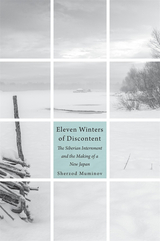
The odyssey of 600,000 imperial Japanese soldiers incarcerated in Soviet labor camps after World War II and their fraught repatriation to postwar Japan.
In August 1945 the Soviet Union seized the Japanese puppet state of Manchukuo and the colony of Southern Sakhalin, capturing more than 600,000 Japanese soldiers, who were transported to labor camps across the Soviet Union but primarily concentrated in Siberia and the Far East. Imprisonment came as a surprise to the soldiers, who thought they were being shipped home.
The Japanese prisoners became a workforce for the rebuilding Soviets, as well as pawns in the Cold War. Alongside other Axis POWs, they did backbreaking jobs, from mining and logging to agriculture and construction. They were routinely subjected to “reeducation” glorifying the Soviet system and urging them to support the newly legalized Japanese Communist Party and to resist American influence in Japan upon repatriation. About 60,000 Japanese didn’t survive Siberia. The rest were sent home in waves, the last lingering in the camps until 1956. Already laid low by war and years of hard labor, returnees faced the final shock and alienation of an unrecognizable homeland, transformed after the demise of the imperial state.
Sherzod Muminov draws on extensive Japanese, Russian, and English archives—including memoirs and survivor interviews—to piece together a portrait of life in Siberia and in Japan afterward. Eleven Winters of Discontent reveals the real people underneath facile tropes of the prisoner of war and expands our understanding of the Cold War front. Superpower confrontation played out in the Siberian camps as surely as it did in Berlin or the Bay of Pigs.

The noted economist Yair Mundlak presents here a theory of the growth of the agricultural sector within the context of a growing economy. He explores the various aspects of the dynamics of agriculture and their relationship to the dynamics of the economy at large, offering a unique blend of theory, methodology, and empirical analysis.
The rate of agricultural growth has varied across countries and over time, even though the main innovations in agricultural technology have been made available to all countries. Consequently, the difference in performance is due to the use made of the available technology. Mundlak treats the implementation of technology as an economic decision similar to decisions about resource supply and allocation. The development of agriculture, like that of other sectors, is determined to a large degree by the economic environment, especially public policies. This framework permits the author to evaluate the effects of policies on growth by examining their effects on sectoral incentives. Mundlak shows that neutral macroeconomic policies may have a stronger effect on sectoral growth than sector-specific policies.
The book contains problem sets, and will be a reference and text for graduate-level courses.



Liu Zhi (ca. 1670–1724) was one of the most important scholars of Islam in traditional China. His Tianfang xingli (Nature and Principle in Islam), the Chinese-language text translated here, focuses on the roots or principles of Islam. It was heavily influenced by several classic texts in the Sufi tradition. Liu’s approach, however, is distinguished from that of other Muslim scholars in that he addressed the basic articles of Islamic thought with Neo-Confucian terminology and categories. Besides its innate metaphysical and philosophical value, the text is invaluable for understanding how the masters of Chinese Islam straddled religious and civilizational frontiers and created harmony between two different intellectual worlds.
The introductory chapters explore both the Chinese and the Islamic intellectual traditions behind Liu’s work and locate the arguments of Tianfang xingli within those systems of thought. The copious annotations to the translation explain Liu’s text and draw attention to parallels in Chinese-, Arabic-, and Persian-language works as well as differences.

Throughout the history of imperial China, the educated elite used various means to criticize government policies and actions. During the Song dynasty (960-1278), some members of this elite found an elegant and subtle means of dissent: landscape painting.
By examining literary archetypes, the titles of paintings, contemporary inscriptions, and the historical context, Alfreda Murck shows that certain paintings expressed strong political opinions—some transparent, others deliberately concealed. She argues that the coding of messages in seemingly innocuous paintings was an important factor in the growing respect for painting among the educated elite and that the capacity of painting's systems of reference to allow scholars to express dissent with impunity contributed to the art's vitality and longevity.


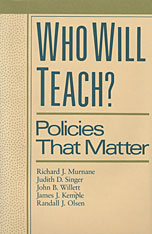
Will America find enough good teachers to staff its public schools? How can we ensure that all our children will be taught by skilled professionals? The policies that determine who teaches today are a confusing and often conflicting array that includes tougher licensing requirements, higher salaries, mandatory master's degrees, merit pay, and alternative routes to certification. Who Will Teach? examines these policies and separates those that work from those that backfire.
The authors present an intriguing portrait of America's teachers and reveal who they are, who they have been, and who they will be. Using innovative statistical methods to track the professional lives of more than 50,000 college graduates, the book describes, in many cases for the first time, just how prospective, current, and former teachers respond to the incentives and disincentives they face. The authors, a group of noted educators, economists, and statisticians, find cause for serious concern. Few academically talented college graduates even try teaching, and many of those who do leave quickly, never to return. Current licensing requirements stifle innovation in training and dissuade many potentially talented teachers at the outset.
But Who Will Teach? shows that we can reverse these trends if we get the incentives right. Although better salaries are essential, especially for new teachers, money is not enough. Potential teachers should be offered alternative paths into the classroom. School districts should improve their recruiting strategies. Licensing criteria should assess teaching skills, not just academic achievement and number of courses completed. The authors offer a promising strategy based on high standards and substantial rewards.


The Global Burden of Disease and Injury Series details and analyzes global patterns of death and disability, providing a bold, comprehensive examination of the state of the world's health.
The Global Burden of Disease (GBD) provides systematic epidemiological estimates for an unprecedented 150 major health conditions. Its methods and results are presented here, including: disaggregated death and disability data; projections to the year 2020; and risk factor evaluations. While it minutely examines causes of death, the GBD is unique in its inclusion of disability. The authors explore the technical bases and moral implications of incorporating social, physical, and mental disabilities in health assessments, explicating the indicator they have developed, the disability-adjusted life-year (DALY). The GBD provides indispensable global and regional data for health planning, research, and education.
Among the study's results: Depression was the fourth leading cause of disease-burden in 1990 and by 2020 will be the single leading cause. Injuries cause over 15 percent of death and disability. HIV will by 2010 inflict as great a burden as the age-old epidemic tuberculosis. By 2020, tobacco use will account for 9 million deaths annually. Ultimately, pneumonia and diarrhea, both primarily diseases of childhood, will continue to inflict the greatest health burden of all.

Deaths from infectious diseases continue to take a heavy toll even though there have been spectacular successes in their control over the last thirty years. In the developing regions, five of the ten leading causes of death and disease burden in 1990 were infectious diseases--respiratory infections, diarrhea, tuberculosis, measles, and malaria--while in the developed regions the only infectious disease among the ten leading causes of death in 1990 was respiratory infections.
This volume contains comprehensive data and detailed discussions of the global epidemiologies of twenty-three infectious diseases, including the above-mentioned conditions as well as hepatitis B, meningitis, polio, and tetanus.
The Global Epidemiology of Infectious Diseases will serve as a comprehensive reference for epidemiologists, public health professionals, and tropical disease specialists.

Over 50 percent of all deaths worldwide are from noncommunicable diseases. The results of the Global Burden of Disease Study dispel the notions that these noncommunicable diseases are related to affluence. In all developing regions, except for India and sub-Saharan Africa, noncommunicable diseases are responsible for more deaths than infectious diseases. Deaths from noncommunicable diseases have been projected to climb from 28.1 million deaths in 1990 to 49.7 million in 2020, increasing as a proportion of all deaths from 55 percent in 1990 to 73 percent in 2020.
This volume provides comprehensive data and detailed discussions of the epidemiologies of all major cancers and cardiovascular conditions, as well as those of chronic obstructive pulmonary disease, asthma, ulcers, diabetes, nephritis, cirrhosis, and appendicitis.

The Global Burden of Disease and Injury Series details and analyzes global patterns of death and disability, providing a bold, comprehensive examination of the state of the world's health.
The encyclopedic Global Health Statistics provides, for the first time, epidemiological estimates for all major diseases and injuries. As part of the Global Burden of Disease project, over 100 disease experts analyzed these data, collected from exhaustive searches of registration data and published and unpublished studies.
Formatted for English, French, and Spanish readers, the figures are displayed in a comprehensive set of tables, presenting for over 200 causes estimates of mortality, incidence, prevalence, durations, and average ages of onset in 1990--all disaggregated by age, sex, and region. Demographic tables and projections of deaths and death rates are also provided.
This succinct data-set provides for the general reader the set of tools necessary to understand disease and injury from a global perspective; and it provides to the researcher unprecedented data to serve as a starting point for further study. This book should stand as an unparalleled desktop reference for anyone interested in the health of populations.

From the health risks of sexual activity to those of pregnancy, abortion, and childbirth, reproduction constitutes enormous risks to a woman’s health. Ill-health conditions related to sex and reproduction account for 25 percent of the global disease burden in adult women. In sub-Saharan Africa, they account for over 40 percent. The catastrophic effects of reproductive ill-health, however, are not limited to women; for infants and adult men, they inflict 25 percent and 1 percent respectively of the global burden.
This volume offers comprehensive data and detailed discussions of the epidemiologies of three sexually transmitted diseases, HIV, and five specific maternal conditions, as well as those of congenital anomalies and perinatal conditions. Projections of the HIV epidemic are provided: by 2020 HIV is projected to double to 2.5 percent of the global disease burden.
Health Dimensions of Sex and Reproduction will serve as a comprehensive reference for epidemiologists, public health specialists, practitioners and advocates of STD and HIV prevention, and reproductive and neonatal health.

Within the space of three centuries leading up to the great Persian invasion of 480 BC, Greece was transformed from a simple peasant society into a sophisticated civilization that dominated the shores of the Mediterranean from Spain to Syria and from the Crimea to Egypt—a culture whose achievements in the fields of art, science, philosophy, and politics were to establish the canons of the the Western world.
Oswyn Murray places this remarkable development in the context of Mediterranean civilization. He shows how contact with the East catalyzed the transformation of art and religion, analyzes the invention of the alphabet and the conceptual changes it brought, describes the expansions of Greece in trade and colonization, and investigates the relationship between military technology and political progress in the overthrow of aristocratic governments.
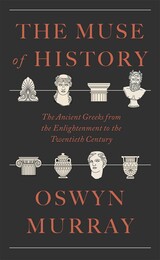
How the modern world understood the ancient Greeks and why they matter today.
The study of ancient Greece has been central to Western conceptions of history since the Renaissance. The Muse of History traces the shifting patterns of this preoccupation in the last three centuries, in which successive generations have reinterpreted the Greeks in the light of their contemporary worlds. Thus, in the eighteenth century, the conflict between Athens and Sparta became a touchstone in the development of republicanism, and in the nineteenth, Athens came to represent the democratic ideal. Amid the ideological conflicts of the twentieth century, the Greeks were imagined in an age of suffering, inspiring defenses against nationalism, Nazism, communism, and capitalism.
Oswyn Murray draws powerful conclusions from this historiography, using the ever-changing narrative of ancient Greece to illuminate grand theories of human society. Analyzing the influence of historians and philosophers including Hegel, Burckhardt, Nietzsche, and Braudel, Murray also considers how coming generations might perceive the Greeks. Along the way, The Muse of History offers rare behind-the-scenes glimpses of figures who shaped the study of ancient Greece, some devotedly cited to this day and others forgotten. We sit in on a class with Arnaldo Momigliano; meet Moses Finley after his arrival in England; eavesdrop on Paul Veyne, Jean-Pierre Vernant, and Pierre Vidal-Naquet; and rediscover Michel Foucault.
A thrilling work that rewrites established scholarly traditions and locates important ideas in unexpected places, The Muse of History reminds us that the meaning of the past is always made in and for the present.

In the course of the twentieth century, no war looms as profoundly transformative or as destructive as World War II. Its global scope and human toll reveal the true face of modern, industrialized warfare. Now, for the first time, we have a comprehensive, single-volume account of how and why this global conflict evolved as it did. A War To Be Won is a unique and powerful operational history of the Second World War that tells the full story of battle on land, on sea, and in the air.
Williamson Murray and Allan R. Millett analyze the operations and tactics that defined the conduct of the war in both the European and Pacific Theaters. Moving between the war room and the battlefield, we see how strategies were crafted and revised, and how the multitudes of combat troops struggled to discharge their orders. The authors present incisive portraits of the military leaders, on both sides of the struggle, demonstrating the ambiguities they faced, the opportunities they took, and those they missed. Throughout, we see the relationship between the actual operations of the war and their political and moral implications.
A War To Be Won is the culmination of decades of research by two of America’s premier military historians. It avoids a celebratory view of the war but preserves a profound respect for the problems the Allies faced and overcame as well as a realistic assessment of the Axis accomplishments and failures. It is the essential military history of World War II—from the Sino–Japanese War in 1937 to the surrender of Japan in 1945—for students, scholars, and general readers alike.
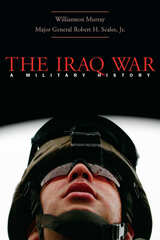
In this unprecedented account of the intensive air and ground operations in Iraq, two of America’s most distinguished military historians bring clarity and depth to the first major war of the new millennium. Reaching beyond the blaring headlines, embedded videophone reports, and daily Centcom briefings, Williamson Murray and Robert Scales analyze events in light of past military experiences, present battleground realities, and future expectations.
The Iraq War puts the recent conflict into context. Drawing on their extensive military expertise, the authors assess the opposing aims of the Coalition forces and the Iraqi regime and explain the day-to-day tactical and logistical decisions of infantry and air command, as British and American troops moved into Basra and Baghdad. They simultaneously step back to examine long-running debates within the U.S. Defense Department about the proper uses of military power and probe the strategic implications of those debates for America’s buildup to this war. Surveying the immense changes that have occurred in America’s armed forces between the Gulf conflicts of 1991 and 2003—changes in doctrine as well as weapons—this volume reveals critical meanings and lessons about the new “American way of war” as it has unfolded in Iraq.
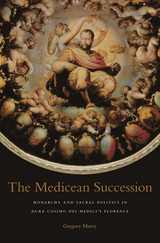
In 1537, Florentine Duke Alessandro dei Medici was murdered by his cousin and would-be successor, Lorenzino dei Medici. Lorenzino's treachery forced him into exile, however, and the Florentine senate accepted a compromise candidate, seventeen-year-old Cosimo dei Medici. The senate hoped Cosimo would act as figurehead, leaving the senate to manage political affairs. But Cosimo never acted as a puppet. Instead, by the time of his death in 1574, he had stabilized ducal finances, secured his borders while doubling his territory, attracted an array of scholars and artists to his court, academy, and universities, and, most importantly, dissipated the perennially fractious politics of Florentine life.
Gregory Murry argues that these triumphs were far from a foregone conclusion. Drawing on a wide variety of archival and published sources, he examines how Cosimo and his propagandists successfully crafted an image of Cosimo as a legitimate sacral monarch. Murry posits that both the propaganda and practice of sacral monarchy in Cosimo's Florence channeled preexisting local religious assumptions as a way to establish continuities with the city's republican and renaissance past. In The Medicean Succession, Murry elucidates the models of sacral monarchy that Cosimo chose to utilize as he deftly balanced his ambition with the political sensitivities arising from existing religious and secular traditions.
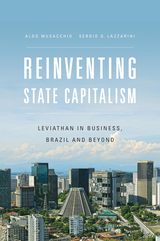
The wave of liberalization that swept world markets in the 1980s and 90s altered the ways that governments manage their economies. Reinventing State Capitalism analyzes the rise of new species of state capitalism in which governments interact with private investors either as majority or minority shareholders in publicly-traded corporations or as financial backers of purely private firms (the so-called “national champions”). Focusing on a detailed quantitative assessment of Brazil’s economic performance from 1976 to 2009, Aldo Musacchio and Sergio Lazzarini examine how these models of state capitalism influence corporate investment and performance.
According to one model, the state acts as a majority investor, granting the state-owned enterprise (SOE) financial autonomy and allowing professional management. This form, the authors argue, has reduced many agency problems commonly faced by state ownership. According to another hybrid model, the state uses sovereign wealth funds, holding companies, and development banks to acquire a small share of equity ownership in a corporation, thereby potentially alleviating capital constraints and leveraging latent capabilities.
Both models have benefits and costs. Yet neither model has entirely eliminated the temptation of governments to intervene in the operation of natural resource industries and other large strategic enterprises. Nevertheless, the longstanding debate over whether private ownership is superior or inferior to state capitalism has become irrelevant, Musacchio and Lazzarini conclude. Private ownership is now mingled with state capital on a global scale.

Among the environmental challenges facing us is alleviating the damage to marine ecosystems caused by pollution and overfishing. Coming to grips with contemporary problems, this book argues, depends on understanding how people have historically generated, perceived, and responded to environmental change. This work explores interactions between society and environment in China’s most important marine fishery, the Zhoushan Archipelago off the coast of Zhejiang and Jiangsu, from its nineteenth-century expansion to the exhaustion of the most important fish species in the 1970s.
This history of Zhoushan’s fisheries illuminates long-term environmental processes and analyzes the intersections of local, regional, and transnational ecological trends and the array of private and state interests that shaped struggles for the control of these common-pool natural resources. What institutions did private and state actors use to regulate the use of the fishery? How did relationships between social organizations and the state change over time? What types of problems could these arrangements solve and which not? What does the fate of these institutions tell us about environmental change in late imperial and modern China? Answering these questions will give us a better understanding of the relationship between past ecological changes and present environmental challenges.

In the theater of war, how important is costume? And in peacetime, what purpose does military spectacle serve? This book takes us behind the scenes of the British military at the height of its brilliance to show us how dress and discipline helped to mold the military man and attempted to seduce the hearts and minds of a nation while serving to intimidate civil rioters in peacetime.
Often ridiculed for their constrictive splendor, British army uniforms of the early nineteenth century nonetheless played a powerful role in the troops' performance on campaign, in battle, and as dramatic entertainment in peacetime. Plumbing a wide variety of military sources, most tellingly the memoirs and letters of soldiers and civilians, Scott Hughes Myerly reveals how these ornate sartorial creations, combining symbols of solidarity and inspiration, vivid color, and physical restraint, enhanced the managerial effects of rigid discipline, drill, and torturous punishments, but also helped foster regimental esprit de corps.
Encouraging recruitment, enforcing discipline within the military, and boosting morale were essential but not the only functions of martial dress. Myerly also explores the role of the resplendent uniform and its associated gaudy trappings and customs during civil peace and disorder--whether employed as public relations through spectacular free entertainment, or imitated by rioters and rebels opposing the status quo. Dress, drills, parades, inspections, pomp, and order: as this richly illustrated book conducts us through the details of the creation, design, functions, and meaning of these aspects of the martial image, it exposes the underpinnings of a mentality--and vision--that extends far beyond the military subculture into the civic and social order that we call modernity.

Picturing Emerson reproduces and explores the background of all known images of Ralph Waldo Emerson created from life, including drawings, paintings, silhouettes, sculptures, and photographs. The book provides dates for these images; information about their makers and Emerson’s sittings; as well as commentary by family members and contemporaries. The resulting work makes it possible for the first time to trace Emerson’s visage over seven decades.
Dating and correctly identifying images of Emerson has long challenged scholars, collectors, and the general public. By examining over fifty years of archival and published research—including web resources, library catalogs, and correspondence with international collections—the authors have been able to locate nearly 140 images dating from 1829 to immediately before Emerson’s death in 1882.
Joel Myerson has written or edited over sixty books on Emerson and the Transcendentalists, most recently Ralph Waldo Emerson: The Major Prose with Ronald A. Bosco. They have jointly received the Julian P. Boyd Award, the highest award presented by the Association for Documentary Editing. Leslie Perrin Wilson is a curator at the Concord Free Public Library, a repository known for significant holdings of Emerson portraiture. She has written extensively on local historical and literary topics.
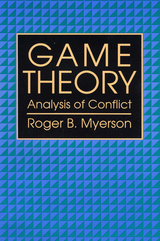
Eminently suited to classroom use as well as individual study, Roger Myerson's introductory text provides a clear and thorough examination of the models, solution concepts, results, and methodological principles of noncooperative and cooperative game theory. Myerson introduces, clarifies, and synthesizes the extraordinary advances made in the subject over the past fifteen years, presents an overview of decision theory, and comprehensively reviews the development of the fundamental models: games in extensive form and strategic form, and Bayesian games with incomplete information.
Game Theory will be useful for students at the graduate level in economics, political science, operations research, and applied mathematics. Everyone who uses game theory in research will find this book essential.

The idea that market mechanisms can mobilize social change by engaging the poor in win–win scenarios is gaining increased world attention. Companies, social sector organizations, and development agencies are all beginning to glean the potential that lies among the world’s poorest people, both as an untapped productive force and a neglected consumer market. This book aims to demonstrate how the private sector can become part of the solution of poverty.
In this study, the authors assess market initiatives in Iberoamerica by large corporations, cooperatives, small and medium enterprises, and nonprofit organizations. A task force drawing on nine teams of researchers from various business schools and universities in nine countries examined 33 experiences, seeking to uncover “what’s needed” for building new business value chains that help move people out of poverty.

José Luis Melena Jiménez is a peerless scholar of editing the texts written in the Mycenaean writing system of the late second millennium BCE and explicating their linguistic and “historical” contents.
This volume takes up problems of script and language representation and textual interpretation, ranging from the use of punctuation markers and numbers in the Linear B tablets and the values of specific signs, to personal names and place names reflecting the ethnic composition of Mycenaean society and the dialects spoken during the proto-Homeric period of the late Bronze Age. New insights are offered into Mycenaean furniture, war chariots, pictorial vases, land cultivation, arboriculture, and shrine areas. Other papers discuss wealth finance, prestige goods, the ideology of obligatory payment, long-puzzling tax impositions, and the inevitable collapse of the palatial economic and political systems.

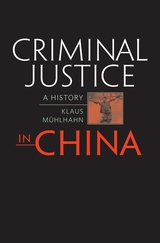
In a groundbreaking work, Klaus Mühlhahn offers a comprehensive examination of the criminal justice system in modern China, an institution deeply rooted in politics, society, and culture.
In late imperial China, flogging, tattooing, torture, and servitude were routine punishments. Sentences, including executions, were generally carried out in public. After 1905, in a drive to build a strong state and curtail pressure from the West, Chinese officials initiated major legal reforms. Physical punishments were replaced by fines and imprisonment. Capital punishment, though removed from the public sphere, remained in force for the worst crimes. Trials no longer relied on confessions obtained through torture but were instead held in open court and based on evidence. Prison reform became the centerpiece of an ambitious social-improvement program.
After 1949, the Chinese communists developed their own definitions of criminality and new forms of punishment. People’s tribunals were convened before large crowds, which often participated in the proceedings. At the center of the socialist system was “reform through labor,” and thousands of camps administered prison sentences. Eventually, the communist leadership used the camps to detain anyone who offended against the new society, and the “crime” of counterrevolution was born.
Mühlhahn reveals the broad contours of criminal justice from late imperial China to the Deng reform era and details the underlying values, successes and failures, and ultimate human costs of the system. Based on unprecedented research in Chinese archives and incorporating prisoner testimonies, witness reports, and interviews, this book is essential reading for understanding modern China.
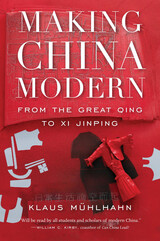
“Thoughtful, probing…a worthy successor to the famous histories of Fairbank and Spence [that] will be read by all students and scholars of modern China.”
—William C. Kirby, coauthor of Can China Lead?
It is tempting to attribute the rise of China to Deng Xiaoping and to recent changes in economic policy. But China has a long history of creative adaptation. In the eighteenth century, the Qing Empire dominated a third of the world’s population. Then, as the Opium Wars and the Taiping Rebellion ripped the country apart, China found itself verging on free fall. More recently, after Mao, China managed a surprising recovery, rapidly undergoing profound economic and social change. A dynamic story of crisis and recovery, failure and triumph, Making China Modern explores the versatility and resourcefulness that guaranteed China’s survival, powered its rise, and will determine its future.
“Chronicles reforms, revolutions, and wars through the lens of institutions, often rebutting Western impressions.”
—New Yorker
“A remarkable accomplishment. Unlike an earlier generation of scholarship, Making China Modern does not treat China’s contemporary transformation as a postscript. It accepts China as a major and active player in the world, places China at the center of an interconnected and global network of engagement, links domestic politics to international dynamics, and seeks to approach China on its own terms.”
—Wen-hsin Yeh, author of Shanghai Splendor
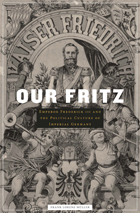
On June 15, 1888, a mere ninety-nine days after ascending the throne to become king of Prussia and German emperor, Frederick III succumbed to throat cancer. Europeans were spellbound by the cruel fate nobly borne by the voiceless Fritz, who for more than two decades had been celebrated as a military hero and loved as a kindly gentleman. A number of grief-stricken individuals reportedly offered to sacrifice their own healthy larynxes to save the ailing emperor.
Frank Lorenz Müller, in the first comprehensive life of Frederick III ever written, reconstructs how the hugely popular persona of “Our Fritz” was created and used for various political purposes before and after the emperor’s tragic death. Sandwiched between the reign of his ninety-year-old father and the calamitous rule of his own son, the future emperor William II, Frederick III served as a canvas onto which different political forces projected their hopes and fears for Germany's future. The book moves beyond the myth that Frederick’s humane liberalism would have built a lasting Anglo-German partnership, perhaps even preventing World War I, and beyond the castigations and exaggerations of parties with a different agenda. Surrounded by an unforgettable cast of characters that includes the emperor’s widely hated English wife, Vicky—daughter of Queen Victoria—and the scheming Otto von Bismarck, Frederick III offers in death as well as in life a revealing, poignant glimpse of Prussia, Germany, and the European world that his son would help to shatter.
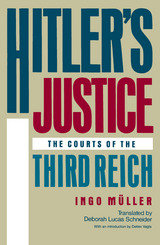


Rarely has anyone in the history of Western culture stirred up such deep, contrary, and enduring passions as Richard Wagner. A proposal to perform his work ignites controversy in Israel. Wagner’s The Ride of the Valkyries blares from helicopters slicing the air of Apocalypse Now. His name leads a list of Germany’s spiritual heroes against a flaming backdrop in Anselm Kiefer’s largest work. Idolized by Nietzsche, appropriated by Hitler, defended by writers from Mann to Adorno, emulated by countless composers, interpreted by artists and filmmakers, Wagner has left us a legacy as complicated as it is profound. To this day the sheer magnitude of his accomplishment retains its power to overwhelm.
This book is a measure of that magnitude, an unprecedented attempt to bring together in one volume what is known about the composer’s life, his work, and his influence. Unparalleled in its scope and depth, this remarkable compendium offers readers a unique opportunity to understand what this prodigious man has meant to the Western world. Described by Brahms as a man of “colossal industry and horrendous energy,” Wagner composed dozens of works, many of them towering masterpieces; he influenced a whole generation of conductors, took part in a revolution, counseled kings and diplomats, and organized the building of the Bayreuth festival theater. His writings on a wide variety of subjects fill sixteen substantial volumes and his thousands of personal letters document a wildly eventful private life.
The Wagner Handbook addresses all of these aspects of the composer’s life and achievement. Central chapters include an account of Wagner’s place in music history by Carl Dahlhaus; Werner Breig’s treatment of individual musical works; Peter Wapnewski’s discussion of Wagner’s operatic works as literature; Isolde Vetter’s chapter on Wagner in the history of psychology; surveys of performance question over the years by Jens Malte Fischer and Oswal Bauer. These and other topics—the individuals who most powerfully influenced the composer and those he influenced, his impact on music history, and the political exploitation of his ideas—are masterfully drawn.
READERS
Browse our collection.
PUBLISHERS
See BiblioVault's publisher services.
STUDENT SERVICES
Files for college accessibility offices.
UChicago Accessibility Resources
home | accessibility | search | about | contact us
BiblioVault ® 2001 - 2024
The University of Chicago Press









